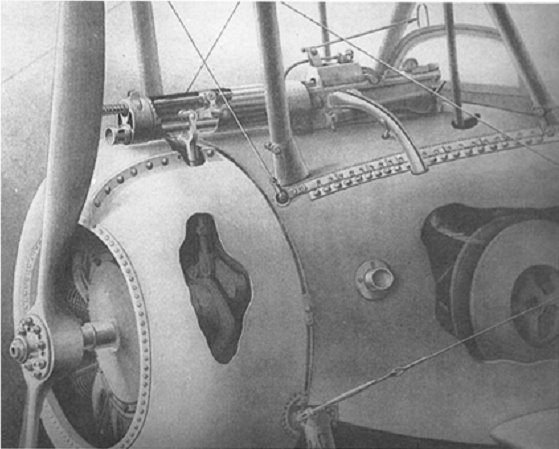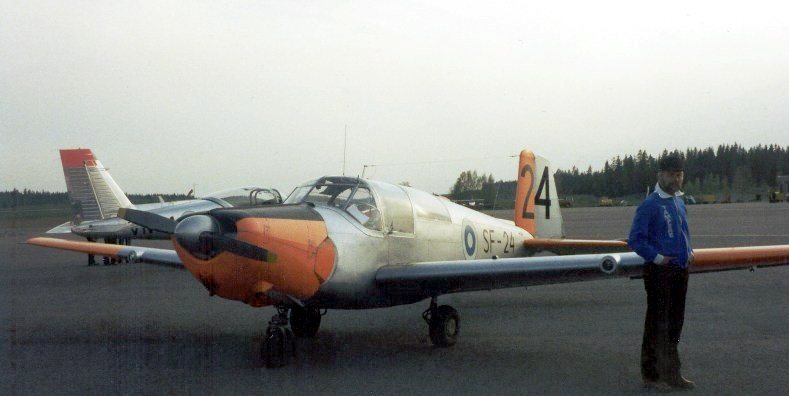|
Aviation Museum Of South-Eastern Finland
The Karelia Aviation Museum ( fi, Karjalan Ilmailumuseo) is located at Lappeenranta Airport in Lappeenranta, Finland. The museum is run by ''Kaakkois-Suomen ilmailumuseoyhdistys ry''. The museum has also been known as the Aviation Museum of South-Eastern Finland ( fi, Kaakkois-Suomen ilmailumuseo). The museum is housed in two covered halls and displays fighter aircraft and smaller objects from the Second World War and onwards. Aircraft on display include: * MiG-21BIS (MG-127), * Saab 35 Draken (DK-213), * Saab 91 Safir (OH-SFB), as well as * Jorma Kettunen's Nieuport 17 replica (OH-U323). In 2005 the museum also had a Hawker Hurricane (HC-452) on loan from the Aviation Museum of Central Finland. Among the smaller objects on display is a radial engine from a Fokker C.X that sank in Lake Saimaa, engine and different parts from a Tupolev SB that went down in Ylämaa. The museum is closed during winters. References External links Karelia Aviation Museum {{authority ... [...More Info...] [...Related Items...] OR: [Wikipedia] [Google] [Baidu] |
Hawker Hurricane
The Hawker Hurricane is a British single-seat fighter aircraft of the 1930s–40s which was designed and predominantly built by Hawker Aircraft Ltd. for service with the Royal Air Force (RAF). It was overshadowed in the public consciousness by the Supermarine Spitfire during the Battle of Britain in 1940, but the Hurricane inflicted 60 percent of the losses sustained by the Luftwaffe in the campaign, and fought in all the major theatres of the Second World War. The Hurricane originated from discussions between RAF officials and aircraft designer Sir Sydney Camm about a proposed monoplane derivative of the Hawker Fury biplane in the early 1930s. Despite an institutional preference for biplanes and lack of interest by the Air Ministry, Hawker refined their monoplane proposal, incorporating several innovations which became critical to wartime fighter aircraft, including retractable landing gear and the more powerful Rolls-Royce Merlin engine. The Air Ministry ordered Hawker's ''Int ... [...More Info...] [...Related Items...] OR: [Wikipedia] [Google] [Baidu] |
Aerospace Museums In Finland
Aerospace is a term used to collectively refer to the atmosphere and outer space. Aerospace activity is very diverse, with a multitude of commercial, industrial and military applications. Aerospace engineering consists of aeronautics and astronautics. Aerospace organizations research, design, manufacture, operate, or maintain both aircraft and spacecraft. The beginning of space and the ending of the air is considered as 100 km (62 mi) above the ground according to the physical explanation that the air pressure is too low for a lifting body to generate meaningful lift force without exceeding orbital velocity. Overview In most industrial countries, the aerospace industry is a cooperation of the public and private sectors. For example, several states have a civilian space program funded by the government, such as National Aeronautics and Space Administration in the United States, European Space Agency in Europe, the Canadian Space Agency in Canada, Indian Space Research ... [...More Info...] [...Related Items...] OR: [Wikipedia] [Google] [Baidu] |
Ylämaa
Ylämaa (; literally translated the "Highland") is a former municipality of Finland, located in the province of Southern Finland as part of the South Karelia region. It was consolidated with Lappeenranta on January 1, 2010.Jalokivistään tunnettu rajakunta joutui luopumaan itsenäisyydestään 11 vuotta sitten – nyt lähes kaikki palvelut ovat kadonneet – '''' (in Finnish) The municipality had a population of 1,408 (31 December 2009) and covers an area of of which is water. The |
Tupolev SB
The Tupolev ANT-40, also known by its service name Tupolev SB (russian: Скоростной бомбардировщик – ''Skorostnoi Bombardirovschik'' – high speed bomber) and development co-name TsAGI-40, was a high speed twin-engined three-seat monoplane bomber, first flown in 1934. The Tupolev design was advanced but lacked refinement, much to the dismay of crews, maintenance personnel, and Stalin, who pointed out that "there are no trivialities in aviation". Numerically the most important bomber in the world in the late 1930s, the SB was the first modern stressed skin aircraft produced in quantity in the Soviet Union and probably the most formidable bomber of the mid-1930s. It was produced in the Soviet Union and was also built under license in Czechoslovakia. Many versions saw extensive action in Spain, the Republic of China, Mongolia, Finland and at the beginning of World War II against Germany in 1941. It was also used in various duties in civil variants, as tra ... [...More Info...] [...Related Items...] OR: [Wikipedia] [Google] [Baidu] |
Lake Saimaa
Saimaa ( , ; sv, Saimen) is a lake located in the Finnish Lakeland area in southeastern Finland. At approximately , it is the largest lake in Finland, and the fourth largest natural freshwater lake in Europe. The name Saimaa likely comes from a non-Uralic, non-Indo European substrate language. History It was formed by glacial melting at the end of the Ice Age. Major towns on the lakeshore include Lappeenranta, Imatra, Savonlinna, Mikkeli, Varkaus, and Joensuu. About 6000 years ago, ancient Lake Saimaa, estimated to cover nearly at the time, was abruptly discharged through a new outlet. The event created thousands of square kilometres of new residual wetlands. Following this event, the region saw a population maximum in the decades following only to later return to an ecological development towards old boreal conifer forests which saw a decline in population. Topography The Vuoksi River flows from Saimaa to Lake Ladoga. Most of the lake is spotted with islands, and narrow can ... [...More Info...] [...Related Items...] OR: [Wikipedia] [Google] [Baidu] |
Fokker C
Fokker was a Dutch aircraft manufacturer named after its founder, Anthony Fokker. The company operated under several different names. It was founded in 1912 in Berlin, Germany, and became famous for its fighter aircraft in World War I. In 1919 the company moved its operations to the Netherlands. During its most successful period in the 1920s and 1930s, it dominated the civil aviation market. Fokker went into bankruptcy in 1996, and its operations were sold to competitors. History Fokker in Germany At age 20, while studying in Germany, Anthony Fokker built his initial aircraft, the ''Spin'' (Spider)—the first Dutch-built plane to fly in his home country. Taking advantage of better opportunities in Germany, he moved to Berlin, where in 1912, he founded his first company, Fokker Aeroplanbau, later moving to the Görries suburb just southwest of Schwerin (at ), where the current company was founded, as Fokker Aviatik GmbH, on 12 February 1912. World War I Fokker capitalized o ... [...More Info...] [...Related Items...] OR: [Wikipedia] [Google] [Baidu] |
Aviation Museum Of Central Finland
The Finnish Air Force Museum ( fi, Suomen Ilmavoimamuseo), formerly the Aviation Museum of Central Finland ( fi, Keski-Suomen ilmailumuseo), is an aviation museum located near Jyväskylä Airport in Tikkakoski, Jyväskylä, Finland. The museum exhibits the aviation history of Finland, from the early 1900s until today. The museum is owned by the Foundation of Aviation Museum of Central Finland ( fi, Keski-Suomen Ilmailumuseosäätiö). The exhibition consists of aircraft, engines and aircrew equipment which has been used by the Finnish Air Force. The equipment of the Air Force Signals Museum has its own section. A large collection of scale models gives a wider perspective to the whole field of aviation. The museum has around 25,000 visitors. Aircraft The following aircraft are a selection of the collection. More aircraft are being stored elsewhere, waiting for restoration. * Avro 504K * Bell P-39 Airacobra * Brewster Buffalo * Bristol Blenheim * De Havilland D.H.60X Moth * De ... [...More Info...] [...Related Items...] OR: [Wikipedia] [Google] [Baidu] |
Nieuport 17
The Nieuport 17 C.1 (or Nieuport XVII C.1 in contemporary sources) was a French sesquiplane fighter designed and manufactured by the Nieuport company during World War I. An improvement over the Nieuport 11, it was a little larger than earlier Nieuports and better adapted to the more powerful engine than the interim Nieuport 16. Aside from early examples, it had the new Alkan-Hamy synchronization gear, permitting the use of a fuselage-mounted synchronised Vickers gun firing through the propeller disc. At the time of its introduction in March 1916, the type's outstanding manoeuvrability and excellent rate of climb gave it a significant advantage over fighters on both sides and was described as "the best pursuit plane of the day". It was used by many operators and entered service with every Allied power and copies were also operated by the (German Air Service). Mass-produced by several French firms, the Nieuport 17 and its derivatives were built under licence in Italy by Nieupo ... [...More Info...] [...Related Items...] OR: [Wikipedia] [Google] [Baidu] |
Lappeenranta Airport
Lappeenranta Airport ( fi, Lappeenrannan lentoasema) is an international airport in Lappeenranta, Finland. It is 2.5 kilometers southwest of the city center and Lappeenranta Central Station. Opened in 1918, Lappeenranta Airport is the oldest airport still in operation in Finland. The Karelia Aviation Museum is in the airport. Flight go on low altitude straight over Lappeenranta midtown which is located 1½ kilometer (1 mile) from the eastern end of the runway. History The airport opened in 1918. Between 1939 and 1944, during World War II, the airport operated as a military air base. In 1951, passenger traffic began at the airport. In 1960, the existing terminal was completed. In 1998, the runway was extended to 2,500 metres. In September 2006, the railway between Lahti and Kerava opened, shortening the travel time by rail to Helsinki and caused the closure of the Lappeenranta-Helsinki air route. In March 2010, Ryanair started flights to Lappeenranta, its second destination in ... [...More Info...] [...Related Items...] OR: [Wikipedia] [Google] [Baidu] |
Saab 91 Safir
The Saab 91 Safir (Swedish for sapphire) is a three (91A, B, B-2) or four (91C, D) seater, single engine trainer aircraft. The Safir was built by Saab AB in Linköping, Sweden (203 aircraft) and by '' De Schelde'' in Dordrecht, Netherlands (120 aircraft). Design and development Development of the Safir began in 1944 as part of a plan to compensate for reductions in orders for military aircraft when the Second World War finally ended. Three major civil programmes were planned, the Type 90 Scandia airliner, the Type 91 Safir light aircraft and the Saab 92 motor car. The Safir was designed by Anders J. Andersson, who had previously worked for Bücker, where he had designed the all-wood Bücker Bü 181 "Bestmann". The Safir thus shared many conceptual design features with the Bestmann. It was primarily of metal construction, although it did have fabric-covered control surfaces. Development was slowed by the need to concentrate on more urgent military work, and by industrial actio ... [...More Info...] [...Related Items...] OR: [Wikipedia] [Google] [Baidu] |
Saab 35 Draken
The Saab 35 Draken (; 'The Kite' or 'The Dragon') is a Swedish fighter-interceptor developed and manufactured by Svenska Aeroplan Aktiebolaget (SAAB) between 1955 and 1974. Development of the Saab 35 Draken started in 1948 as the Swedish air force future replacement for the then also in development Saab 29 Tunnan dayfighter and Saab 32B Lansen night fighter. It featured an innovative but unproven double delta wing, which led to the creation of a sub-scale test aircraft, the Saab 210, which was produced and flown to test this previously-unexplored aerodynamic feature. The full-scale production version entered service with frontline squadrons of the Swedish Air Force on 8 March 1960. It received the designation Flygplan 35 (Fpl 35; 'Aeroplane 35') and was produced in several variants and types, most commonly as a fighter type with the prefix ''J'' (J 35), standing for ''Jaktflygplan'' (Pursuit-aircraft), the Swedish term for fighter aircraft. The Saab 35 Draken is known for, amo ... [...More Info...] [...Related Items...] OR: [Wikipedia] [Google] [Baidu] |







